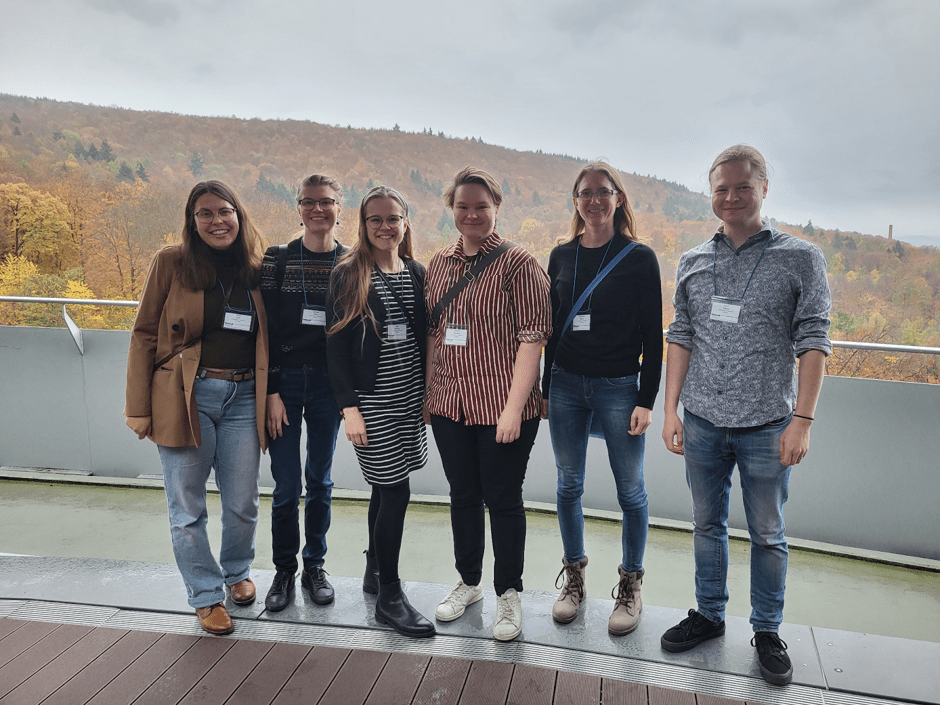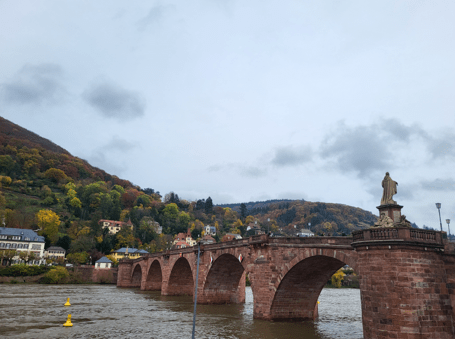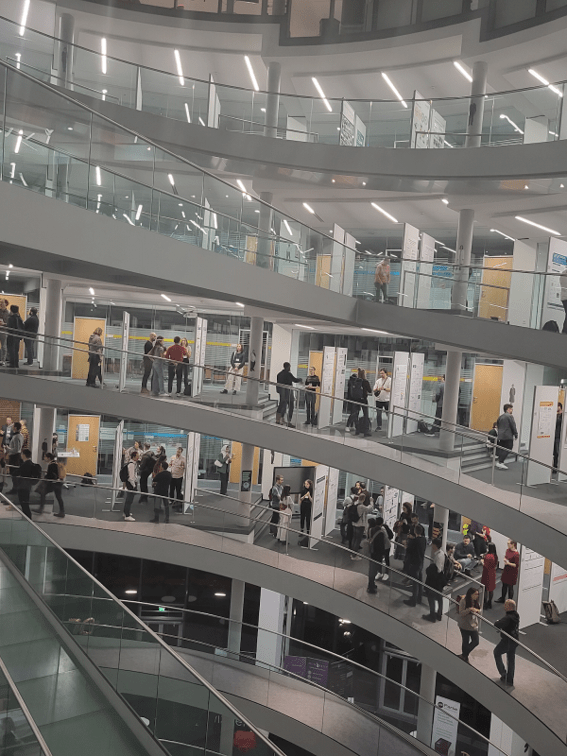
By: Aurora Taira
Suomennos: Päämääränä parempi ymmärrys syövästä — välipysäkki Heidelbergissä
How many doctoral researchers are needed to attach a poster on a poster board? The answer to this question is strongly correlated with the quality of the pins available, but it might take up to 3 doctoral researchers. Luckily, there would have been almost 300 scientists whom we could have consulted with this problem. In this blog we’ll tell you about our trip to Heidelberg where the European Molecular Biology Laboratory (EMBL) organized a conference on cancer genomics on November 15-17 2023.

The three conference days offered us an opportunity to hear talks from professionals from all over the world and to reach the cutting edge of cancer genomics. Among other topics we heard for example the latest news on cancer genome medicine, emerging technologies in cancer genomics and about genomic instability and mutational processes in different cancer types.
But why travel somewhere else to hear about all these things? Wouldn’t it just be easier to browse through some good journals and read what’s going on?

One of the most important aspects in these scientific meetings is that they offer scientists a place to discuss unpublished data. Publishing biomedical research is – and indeed for good reasons! – a tightly regulated process; a study ready for publication has undergone several layers of quality control and peer review. Ongoing projects and science on an idea level are not printed on Nature’s back-pages and thus these gatherings are of most importance to people willing to share, distribute and discuss science at its early stages.
But how to find a scientist among 300 participants who might have new insights into your projects? With whom would it be useful to share ideas when there is only a limited amount of time?
Scientific conferences are not only presentations after presentations but also an opportunity to find new collaborators and contacts. A person working on cancer epigenetics and a person working on mutational signatures look just the same during the coffee breaks, but the scientific community has come up with a simple solution: posters, the Tinder of the science world! Two poster sessions took place on different days. One poster session we stood near our posters and chatted with people who found them interesting. On the other day it was our turn to check the posters that touched our hearts. Designing a poster is in a way a form of art. How to smoothly catch attention from the right people? What is the first impression a poster gives to a stranger? Visual appearance must be considered carefully. Designing the posters paid off, as we had many great and lively discussions with scientists we probably would never have met without the conference.
Poster sessions allow people to share their ideas on ongoing projects or recently published research. Our group presented new projects about FGFR1/2 mutations in uterine leiomyomas, mutational signature analysis of sinonasal adenocarcinomas, retrotransposon events in tumorigenesis, chromatin state annotation on uterine leiomyomas, characterization of microsatellite instable colon cancer and about BRAF mutations, their link to methylation and metabolism in colon cancer. Photo: Päivi Nummi

MBL Cancer Genomics conference gave us a great overview on the hot topics being studied in the field. We heard excellent talks for example about cytosponge, a new diagnostic test method for oesophageal cancer, acral melanoma, a rare melanoma subtype which is actively being studied in Latin America and an update on genomic instability at CTCF/cohesin-binding sites, the last being an interesting continuum to a study published by our lab in 2015.
After the three intensive science days we had some time to walk around Heidelberg old town and enjoy some apple strudels. Whoever decided to build EMBL headquarters in Heidelberg clearly had a good taste in beautiful old buildings and nature.
In science, and in life in general, there are often options. Especially in science you should always justify your choices using the best available knowledge and by carefully considering the consequences which may follow from your decisions. These principles would have been good to follow also in the process of deciding which bus to take from Heidelberg in order to get back to Frankfurt and the airport. Driving (literally) around Heidelberg on a dark and stormy night would not have been as fun as it was without the company of colleagues sharing the same confusion about being lost somewhere in Germany. Finally we managed to get to the airport in time and as souvenirs we brought some new ideas, chocolate and glühwein.

Want to learn more about the Finnish Center of Excellence in Tumor Genetics?
Keep up to date with the latest tweets, videos and blog posts for a peek into the everyday
life in cancer research; subscribe to our blog and YouTube channel!
and don’t forget to follow us on Twitter (nowerdays X) (@CoEinTG)
One thought on “On the way to understanding cancer- a pit stop in Heidelberg”
Comments are closed.